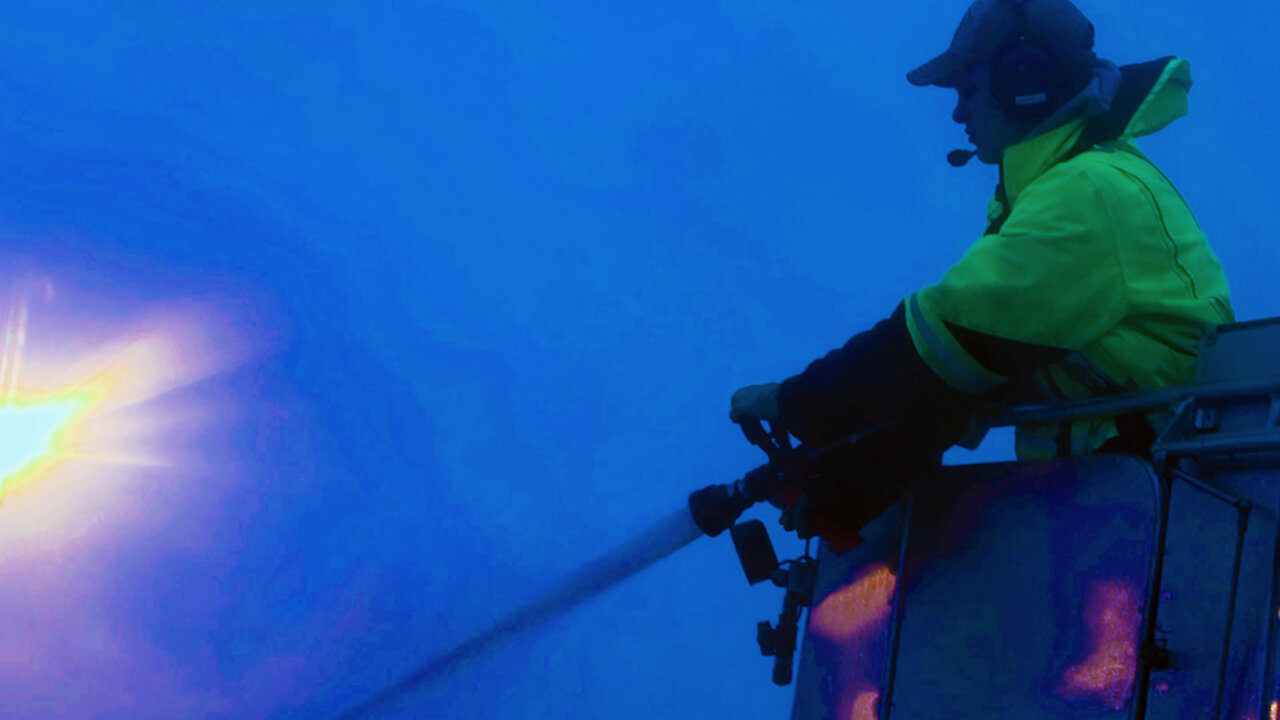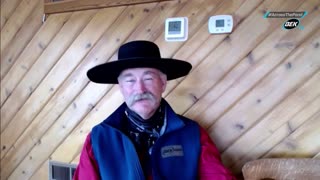Premium Only Content

Have you ever seen a plane being de-iced?
De-icing dee plane!
Buzzing around like flies, spewing out firehose-volume, lime green gushing globs of goo all over the wings of each and every airplane that wants to fly on this chilly day.
These Ottawa Airport de-icing operators move their machines with a certain elegance, almost ballet-like.
Notice that the trucks themselves are maneuvering driverless. That is because the person up in the cherry picker doing the de-icing, also controls the truck itself. Steering, wheel, brakes and accelerator - translates to a joystick and a couple of dials.
Here are some excerpts from an Air Canada article called,
Out in the cold: De-icing is a critical part of winter flying
Everyone who travels in the winter, especially in Canada, is by now familiar with the captain’s message from the flight deck explaining that before takeoff, the aircraft must make a stop at the de-icing bay. But why is de-icing so important, and how is it done?
“No snow, ice or frost can adhere to the wings of an aircraft because it disrupts the aerodynamic flow over the wing. Air must smoothly flow over the wing to produce lift, which makes de-icing a key component of winter flying,“ explained Air Canada Captain Douglas Morris.
“The most critical aspect is to remove all the contamination before flight. It is exceptionally important that we get all the frost, snow and ice off the aircraft before the aircraft starts to take off,“ said Geoff Nicholas, Air Canada’s De-ice Coach.
“These are purpose-built de-icing trucks. They allow us to de-ice and drive at the same time. They also allow us to be much more efficient with our application of fluids on the aircraft,“ Nicholas said.
Air Canada’s crews are able to control the blended concentration used, based on weather, allowing for optimization so they aren’t using more glycol than needed. In many airports, the deicing area is cleaned after every few aircraft using a truck-based vacuum, allowing for a good portion of the de-icing fluid to be recycled at an on-site facility to be reused. This helps reduce the environmental footprint of the operation.
There are two different types of fluid used on aircraft: Type 1 and Type 4.
“The passengers will see two different types of fluid that we use. The first one is Type 1, it’s the pink (sometimes orange) fluid. It is a heated fluid and we use that to remove all the ice and snow from the aircraft. The second fluid that you will see is green in colour. It’s more of a sealer. It provides a barrier between the aircraft surfaces and any ongoing precipitation like snow or freezing rain,“ he said.
Crews handle every type of aircraft, from the smallest turboprops to the largest Boeing 700 series.
So the next time you're seated in an aircraft at the de-icing bay, give the crew a wave because they are a vital part of safe flying in winter.
-
 4:55
4:55
AmplifiedLIFE
7 months agoPredictions for 2025 & Beyond from Beyond
1203 -
 1:44:38
1:44:38
Nick Freitas
15 hours agoHave Republicans Already Won 2026?
25K10 -
 LIVE
LIVE
The Bubba Army
21 hours agoHulk Hogan Dead at 71 | Bubba the Love Sponge® Show | 7/25/2025
4,909 watching -
 23:48
23:48
Jasmin Laine
16 hours ago“CHRISTIANS Are a Threat” Musician BANNED From Canada for MAGA Beliefs
3.11K21 -
 LIVE
LIVE
BEK TV
22 hours agoTrent Loos in the Morning 7/25/2025
437 watching -
 15:03
15:03
Dad Saves America
13 hours ago $1.41 earnedHow the Department of Education Hijacked Our Schools - Poisoning of the American Mind: Pt 3
26.7K5 -
 14:06
14:06
Silver Dragons
15 hours agoBullion Dealer Reacts to Silver Price TRIPLING in 5 Years
11.5K4 -
 28:31
28:31
Anthony Rogers
14 hours agoBOWLING FOR SOUP interview
9.04K2 -
 17:12
17:12
Nate The Lawyer
2 days ago $2.19 earnedTrans Swimmer Lia Thomas Stripped of Titles for Being a Man in Women’s Sports
28.5K24 -
 12:17
12:17
Zoufry
20 hours agoThe Hunt For The Real Life James Bond
34.7K6